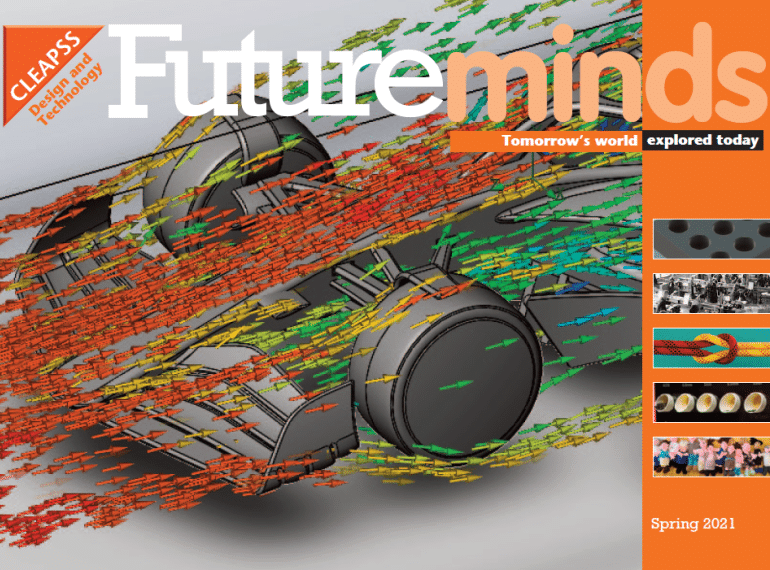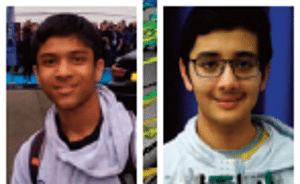
With this weekend’s Bahrain Grand Prix due to launch the new Formula 1 season, members of QE’s pupil-run Year 12 Engineering Society have been making front-page news with their own exploration of the hi-tech sport.
 The Sixth Form engineers looked into how CFD (computational fluid dynamics) can be used to create a virtual wind tunnel for an F1 car design. And an article about their work penned by the society’s leaders, Nirmay Jadhav and Ansh Jaiswal, features prominently in the current edition of Futureminds, the magazine produced by CLEAPPS*, a national science and technology education advisory service. In the article, Nirmay and Ansh explain why they established the society, the activities they have already held and what they aim to do in the future.
The Sixth Form engineers looked into how CFD (computational fluid dynamics) can be used to create a virtual wind tunnel for an F1 car design. And an article about their work penned by the society’s leaders, Nirmay Jadhav and Ansh Jaiswal, features prominently in the current edition of Futureminds, the magazine produced by CLEAPPS*, a national science and technology education advisory service. In the article, Nirmay and Ansh explain why they established the society, the activities they have already held and what they aim to do in the future.
Headmaster Neil Enright said: “I congratulate Nirmay and Ansh. This is a good example of the student-led clubs and societies that are such a feature of life at QE. We find them an excellent way for boys to display initiative and develop skills such as teamwork, while providing enrichment for themselves and for their peers.”
The pair’s achievement was also praised by Head of Technology Michael Noonan: “It has been encouraging to see how they have applied their knowledge to solving real-world problems using new and emerging technologies.”
In the article, Ansh and Nirmay state that they launched the society with a threefold aim:
- To educate members about the different engineering disciplines
- To help those interested in applying for engineering courses at university
- To pursue their own engineering interests and help others to do so, too.
One key meeting of the society looked at mechanical engineering, with members discussing why it is among the most popular fields in engineering. “To build upon this overview, we hope to incorporate some practical mechanical engineering with small challenges that can be worked upon weekly as a taster for the career of a mechanical engineer,” said Ansh.
In other sessions, members worked together to solve questions from Cambridge University’s Engineering Admissions Assessments (ENGAA). “This helped us get to grips with the principles and gave us all some preparation in advance,” Nirmay said.
But the undoubted highlights so far have been Computer-Aided Design (CAD) sessions, he said. “We went through the basics of how to design and develop models in 3D workspaces with Solidworks (our software of choice).” In the second week of these sessions, the society members focused on the simulations that can be carried out using Solidworks, including both the CFD simulation used to create the virtual wind tunnel and also FEA (Finite Element Analysis), which can be used to collect data about the performance of a 3D model. To explore FEA, the boys tested a load on a prism.
Ansh and Nirmay have plans to run further extra-curricular activities or competitions involving “the practical, hands-on aspects of engineering that we all enjoy”, while also boosting their skills and their appeal to employers and universities.
Besides Ansh and Nirmay, the society’s members are: Amudhu Anandarajah, Varun Vijay Kumar, Aiden Smith, Medushan Thevadaran and Alex Woodcock.
* CLEAPSS (Consortium of Local Education Authorities for the Provision of Science Services) is an advisory service providing support in science and technology to local councils and schools.
